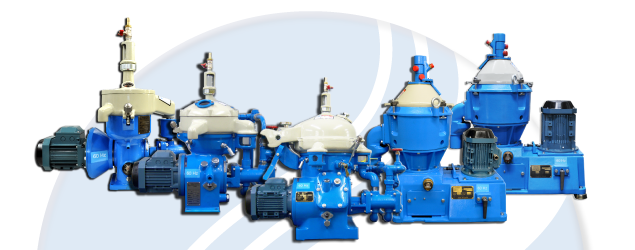In the ever-evolving landscape of industrial processes and technological advancements, separation techniques play a pivotal role in a wide range of applications.
From the pharmaceutical and chemical industries to wastewater treatment and food production, the efficiency and effectiveness of separation processes have a profound impact on product quality, environmental sustainability, and overall operational costs.

Among the array of separation methods available, disc stack centrifuges have emerged as a revolutionary technology, transforming the way industries approach separation challenges. This article delves into the inner workings, applications, and benefits of disc stack centrifuges, shedding light on how they have revolutionized the field of separation.
The Principle of Disc Stack Centrifugation
At the heart of disc stack centrifuges lies a principle rooted in the laws of physics: the sedimentation of particles under the influence of centrifugal force.
These machines harness the power of rotation to generate immense gravitational forces that induce the separation of different phases, such as solids from liquids or immiscible liquids from each other.
The key innovation of disc stack centrifuges is the arrangement of closely spaced, conical discs within the centrifuge bowl. As the mixture is fed into the bowl and subjected to rapid rotation, the centrifugal force causes the heavier components to migrate towards the periphery, while the lighter components accumulate towards the center.
The unique design of the discs enhances this separation process by creating a larger effective surface area, facilitating the efficient settling of particles and droplets.
Applications Across Diverse Industries
Disc stack centrifuges have found applications in a plethora of industries, each benefiting from their exceptional separation capabilities. Let’s explore some of the key sectors where disc stack centrifuges have revolutionized separation processes:
- Pharmaceuticals: In drug manufacturing, these centrifuges are used to separate cells, proteins, and other biomolecules from fermentation broths or cell cultures. This results in higher purity and yield of bioactive compounds, essential for the production of life-saving medications.
- Food and Beverage: Disc stack centrifuges are employed in the clarification of juices, separation of cream from milk, and purification of edible oils. These processes ensure the removal of impurities and contaminants, enhancing the quality and shelf life of consumable products.
- Chemicals and Petrochemicals: In the chemical industry, these centrifuges aid in the separation of fine particles, catalyst recovery, and the purification of chemical intermediates. They also play a crucial role in wastewater treatment, removing pollutants and reducing environmental impact.
- Marine and Biodiesel: Disc stack centrifuges are utilized in marine industries for separating water and solid particles from fuel oil, ensuring efficient engine performance and compliance with environmental regulations.
- Biotechnology: Biopharmaceutical companies rely on these centrifuges to clarify and concentrate cell cultures, harvest valuable biomolecules, and ensure consistent product quality.
Benefits and Advantages
The adoption of disc stack centrifuges has led to a multitude of benefits that have revolutionized separation processes:
- **Efficiency**: Disc stack centrifuges operate at high rotational speeds, enabling rapid separation and reduced processing times compared to traditional methods.
- **High G-Force**: The centrifugal forces generated by these machines are several thousand times stronger than gravity, facilitating efficient separation even for fine particles and droplets.
- **Enhanced Separation**: The design of the conical discs provides a larger surface area for sedimentation, leading to improved separation efficiency and purity.
- **Reduced Product Loss**: The efficient separation and collection mechanisms minimize product losses, ensuring higher yields and cost-effectiveness.
- **Flexibility**: These centrifuges can be tailored to different applications by adjusting factors such as rotational speed, feed flow rate, and disc configuration.
- **Automation**: Modern disc stack centrifuges are equipped with advanced automation features, reducing the need for manual intervention and enhancing process control.
- **Environmental Benefits**: By improving product quality and reducing waste generation, these centrifuges contribute to sustainable manufacturing practices and reduced environmental impact.
Future Prospects and Innovations
As technology continues to advance, disc stack centrifuges are poised to undergo further innovations, enhancing their capabilities and expanding their reach. Researchers are exploring the integration of IoT (Internet of Things) technologies to enable real-time monitoring and optimization of centrifuge operations. Additionally, advancements in materials and manufacturing techniques could lead to the development of more durable and efficient centrifuge components.
Conclusion
Disc stack centrifuges have undoubtedly revolutionized the field of separation, impacting a wide range of industries by providing efficient, cost-effective, and environmentally friendly solutions.
Their ability to swiftly and effectively separate different phases has led to improved product quality, reduced waste, and enhanced process control. As these centrifuges continue to evolve and find new applications, they are poised to play an increasingly vital role in shaping the future of separation technology across various sectors.



